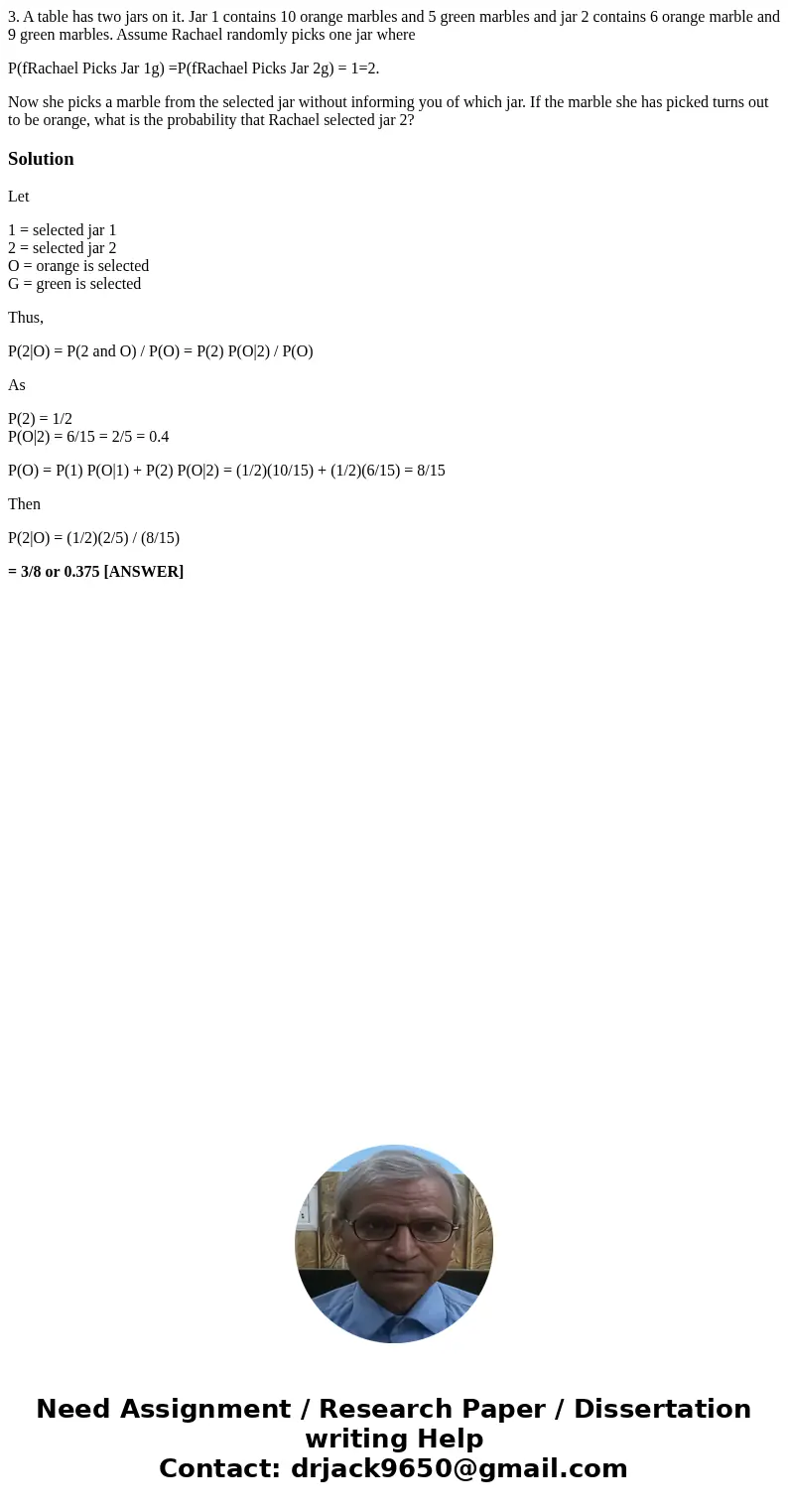3 A table has two jars on it Jar 1 contains 10 orange marble
3. A table has two jars on it. Jar 1 contains 10 orange marbles and 5 green marbles and jar 2 contains 6 orange marble and 9 green marbles. Assume Rachael randomly picks one jar where
P(fRachael Picks Jar 1g) =P(fRachael Picks Jar 2g) = 1=2.
Now she picks a marble from the selected jar without informing you of which jar. If the marble she has picked turns out to be orange, what is the probability that Rachael selected jar 2?
Solution
Let
1 = selected jar 1
2 = selected jar 2
O = orange is selected
G = green is selected
Thus,
P(2|O) = P(2 and O) / P(O) = P(2) P(O|2) / P(O)
As
P(2) = 1/2
P(O|2) = 6/15 = 2/5 = 0.4
P(O) = P(1) P(O|1) + P(2) P(O|2) = (1/2)(10/15) + (1/2)(6/15) = 8/15
Then
P(2|O) = (1/2)(2/5) / (8/15)
= 3/8 or 0.375 [ANSWER]

 Homework Sourse
Homework Sourse